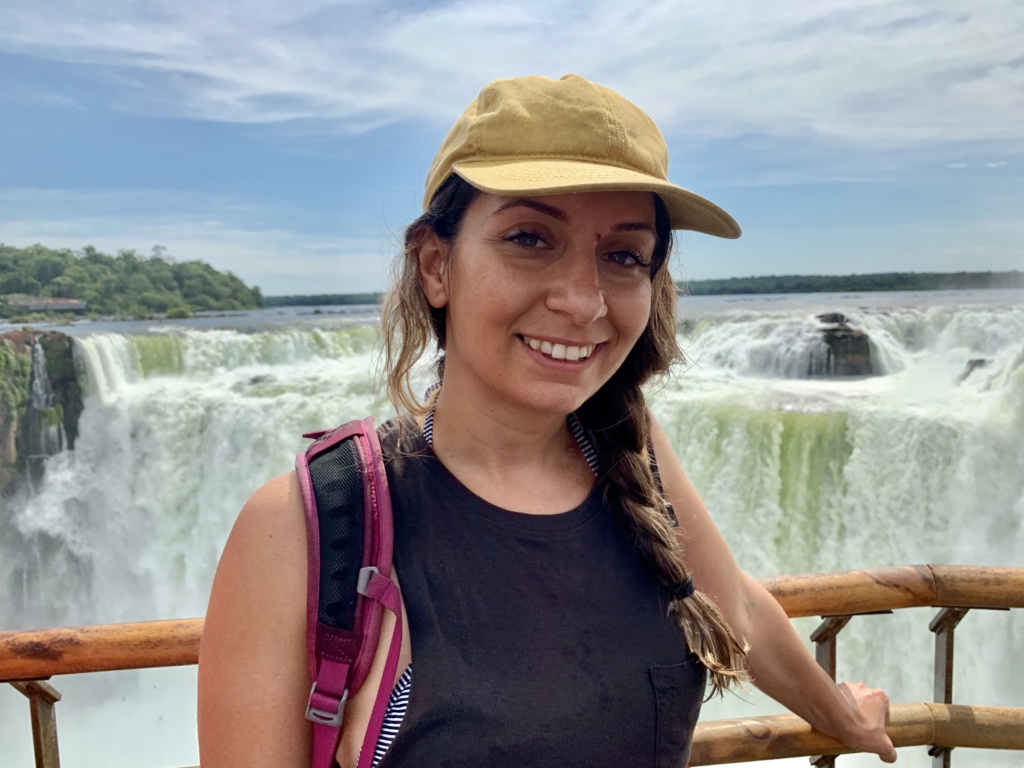Iguazu Falls is a massive geographical wonder that calls both Argentina and Brazil home. I have yet to visit Niagara Falls, but was told that while Niagara Falls is impressive, Iguazu is much taller and wider and within a tropical climate so it pretty much beats Niagara.
I just got back from my third trip to Argentina and while I had previously explored different regions of Argentina like the glaciers in the south, wine country in Mendoza and the alpine lakes of Patagonia, I had never made it to Iguazu Falls so I am glad that we got to sneak a few days away from Buenos Aires to experience this massive UNESCO World Heritage site on both the Argentinian and Brazilian side.
I also want to note that Iguazu Falls on the Argentinian side is almost entirely wheel-chair accessible and stroller-friendly. I’m not sure about wheel chairs, but I did see strollers available to rent. 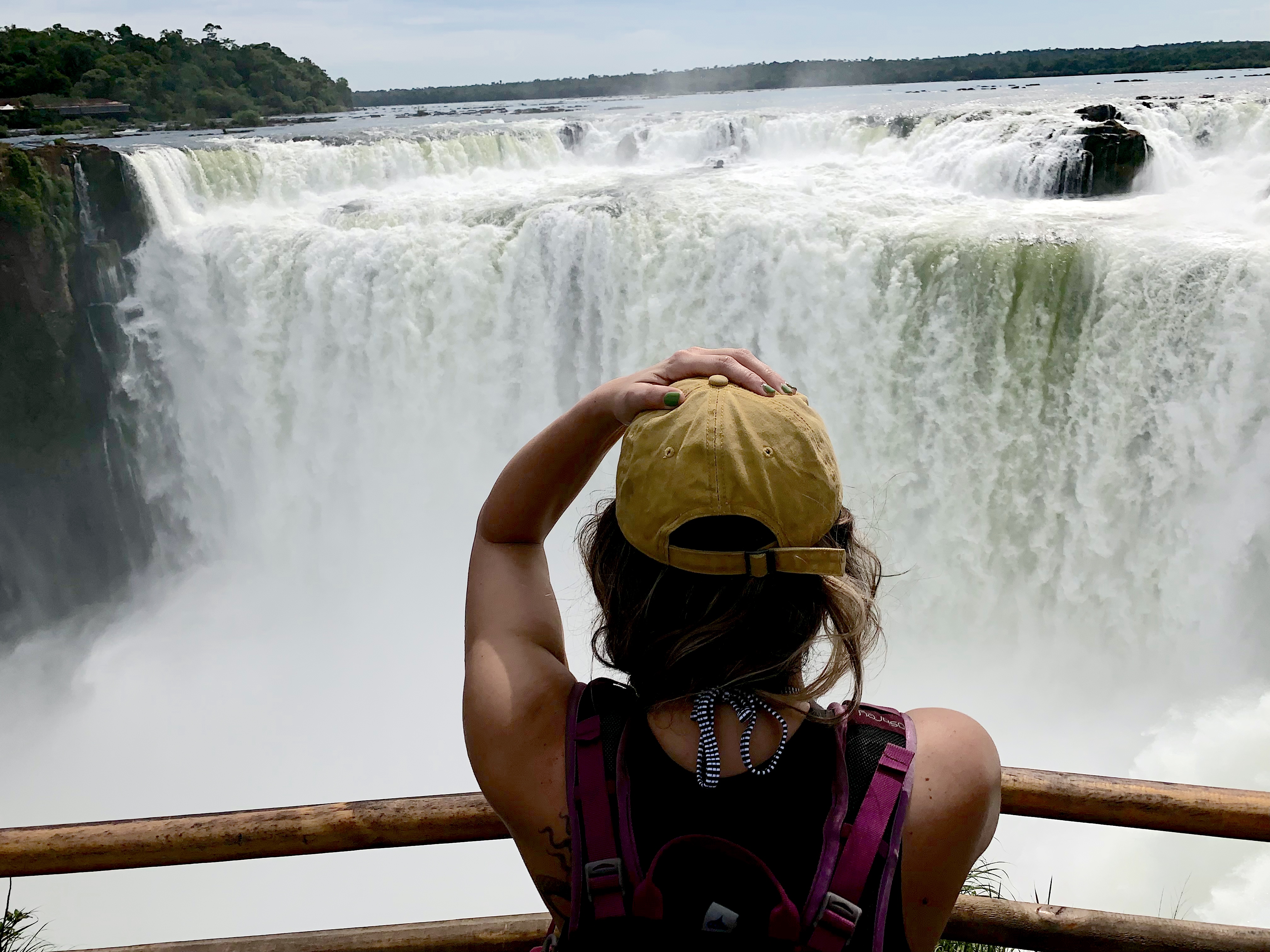
How to Get to Iguazu Falls
Iguazu Falls is in the province of La Missiones which is about 800 miles away from Buenos Aires and you can get there either by bus or by plane. The quickest way to get there being by airplane.
While taking the bus would typically be the most budget friendly mode of transportation to Iguazu Falls, recently a new airline came about in Argentina called FlyBondi and while they have ultra-low competitive airfare, I do not recommend them for safety reasons. They were not granted a permit to operate out of the airport so because the heads of the company are friends with the president, they were basically given what seems to be a military base’s airport. Ok, so no big deal, but they are continuously having technical issues with their airplanes and they only have 5 planes … so which flight do you want to be on? We actually had a bad experience landing so speaking from a first person account, maybe cheaper is not smarter when it comes to FlyBondi.
Here are my sources and other recent serious issues with FlyBondi:
- Tail crashed during take off: https://www.thebubble.com/picardi-asks-suspension-flybondi-flights/
- Serious mechanical failures, has to return to half an hour to the starting point: https://vaaju.com/argentinaeng/another-error-in-a-flybondi-flight-the-planet-must/
- Air Control (ARG) reported the crew did not declare emergency despite the burst tire: http://avherald.com/h?article=4c23db8a
There are actually three airports in Buenos Aires: EZE (international), Aeroparque (within the city) and Palomar (25 miles from the city.) Palomar is the airport which FlyBondi operates out of and you can take a trai to get to the airport. The other airlines that fly to Iguazu are most likely going to fly out of Aeroparque.
Airlines that fly directly to Iguazu from Buenos Aires are:
- Aerolineas
- Norweigian
- LATAM
- Andes
Once you land in Iguazu, there are shuttle/bus/taxi services/car rentals in the airport that you can hire. The taxi was 800 ARS whereas the shuttle was 200 ARS per person and it dropped us off directly at our hotel. We went with the shuttle.
If you prefer to take a bus to Iguazu Falls, you can compare bus fares on Plataforma 10 as well as purchase your bus ticket. Plataforma 10 is a reliable source to purchase from and has an option to funnel through the website in English.
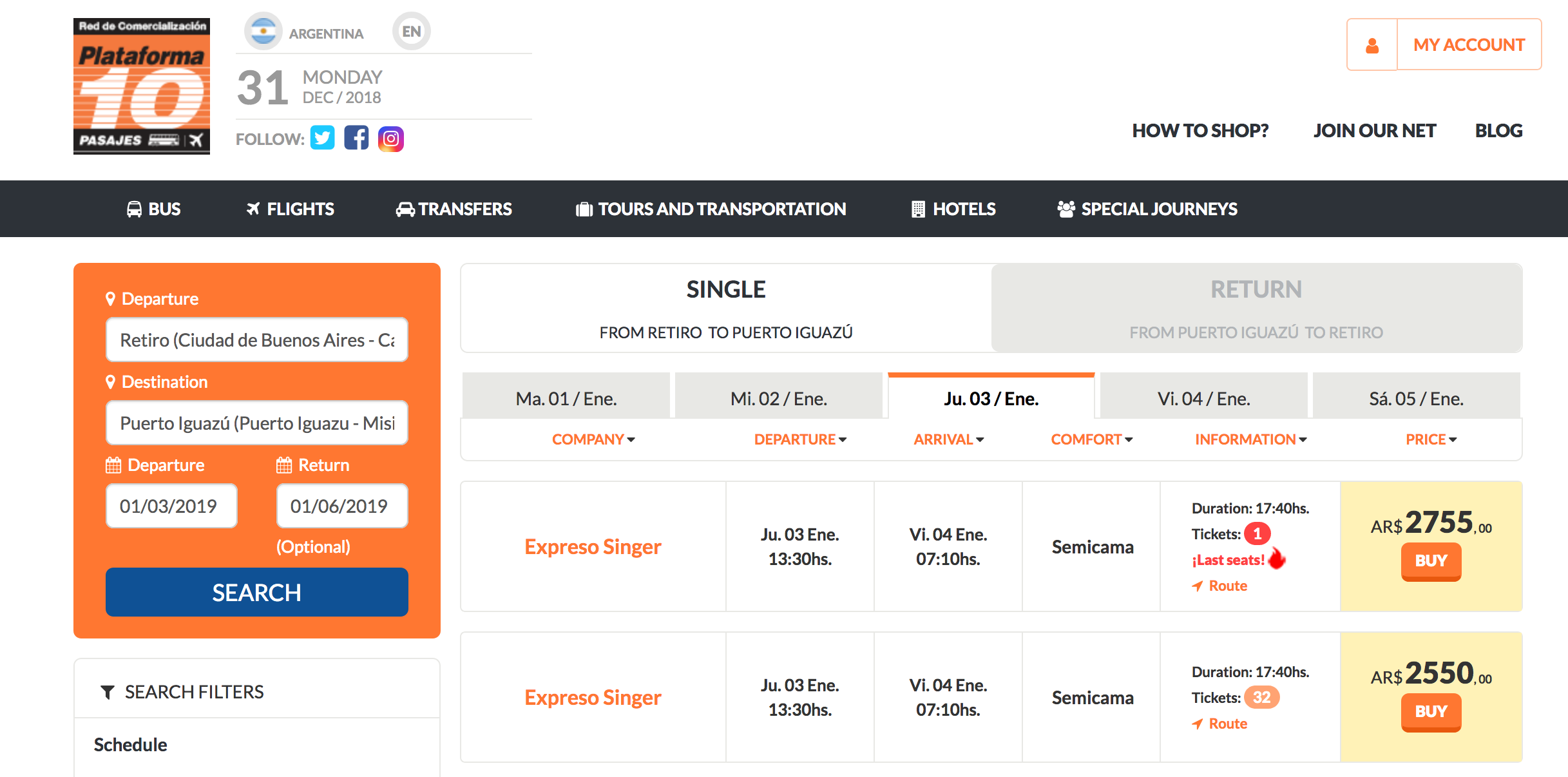
Best Time to Go to Iguazu Falls
The middle of December is NOT the best time to go, but I’ll take what I can get. While we were there, the average temperature … and I am not making this up, was 109.4 Fahrenheit or 43 Celsius plus intense tropical humidity. On our first night, there were severe thunder and lightning storms, but similar to Costa Rica, when you wake up the next day, you wouldn’t have even known that it rained. It just dries up so fast. So when is the best time to go to Iguazu Falls? April-June during the driest part of the year. If you end up going during the hottest and wettest season, no big deal … the place is amazing, you won’t miss much but you’ll just be smacking away some mosquitos.
What to Bring with You to Iguazu Falls
If you’re packing light to Iguazu Falls, the biggest essentials to bring with you are sunscreen, insect repellant, a hat, sunglasses, bathing suit, comfortable walking/running shoes. Definitely wear a swimsuit under your clothes when you go to the falls, the last thing you want to have on is cotton panties while you’re sweating profusely and getting soaked by the waterfalls. (If you insist on no swim suit, check out this article on what type of undies you should wear in tropical climates.)
The Argentinian Side of Iguazu Falls
When I got back from Iguazu Falls, people kept asking me if it was what I expected. It was better than what I expected. I thought it was going to be a view of a line of falls and that was that. No. You’re on top of the falls, you’re under the falls, your next to the falls, you are in the falls.
Here is what your ticket includes:
- Nature Interpretation Center
- Ecological Jungle Train
- Green Trail
- Upper Circuit
- Lower Circuit
- Devil’s Throat
- Macuco Trail & Arrechea Waterfall
Depending on what trail you’re on, you’re experiencing a different bit of the falls and it is all impressive, massive, awesome, etc etc etc. HOLY MOLY. Ok, I’ll stop talking here and you can see the photos for yourself.
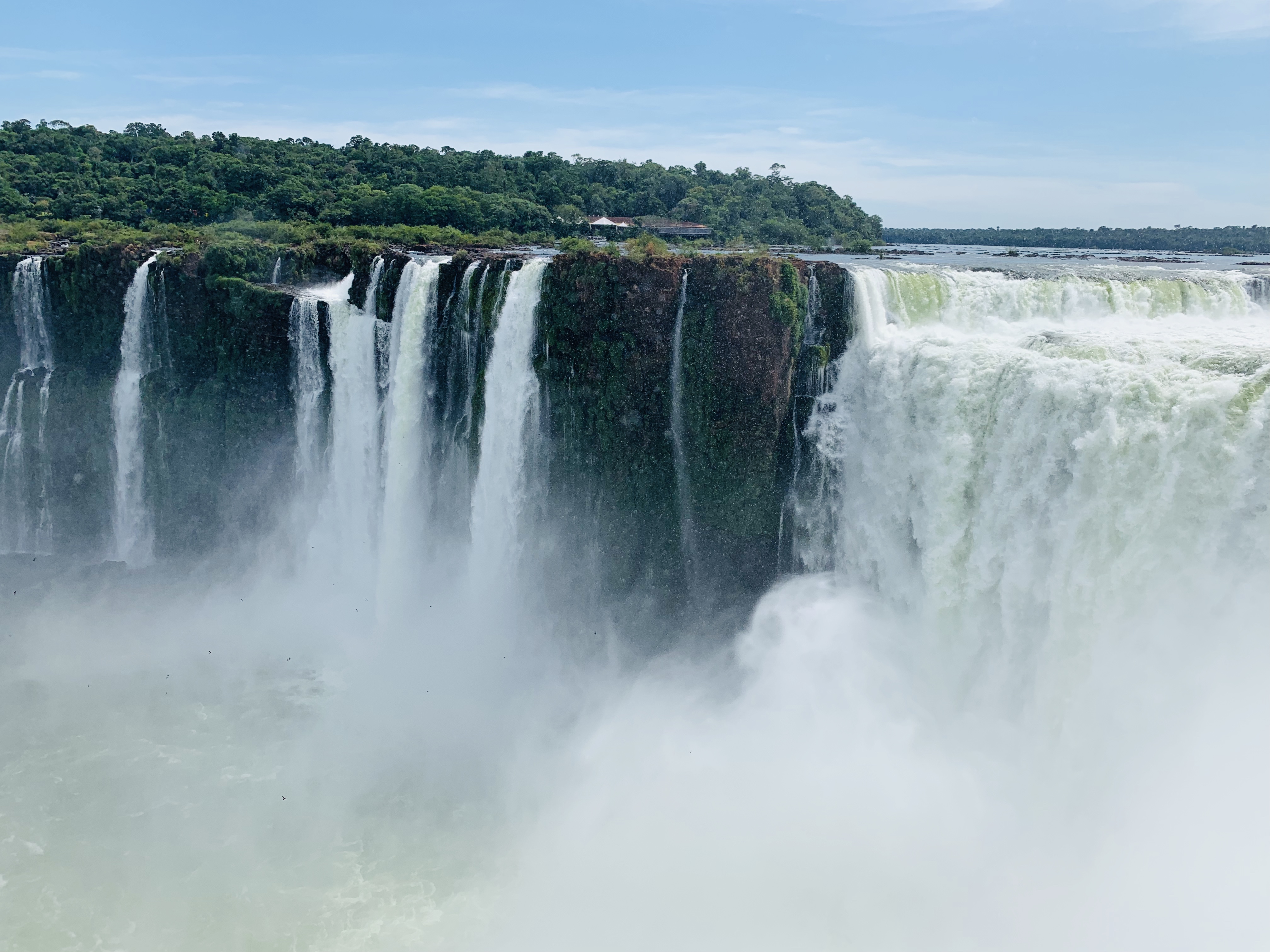
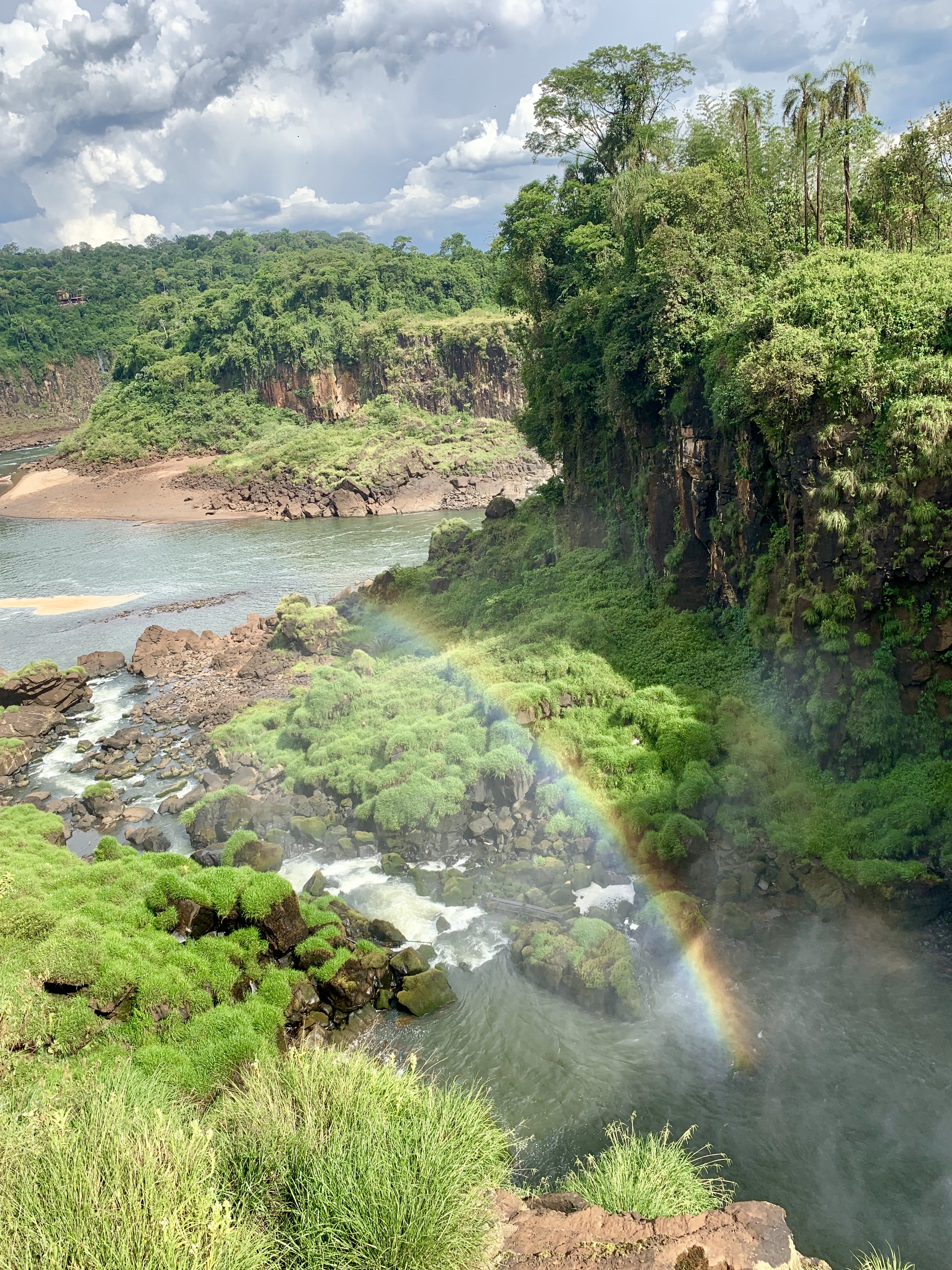
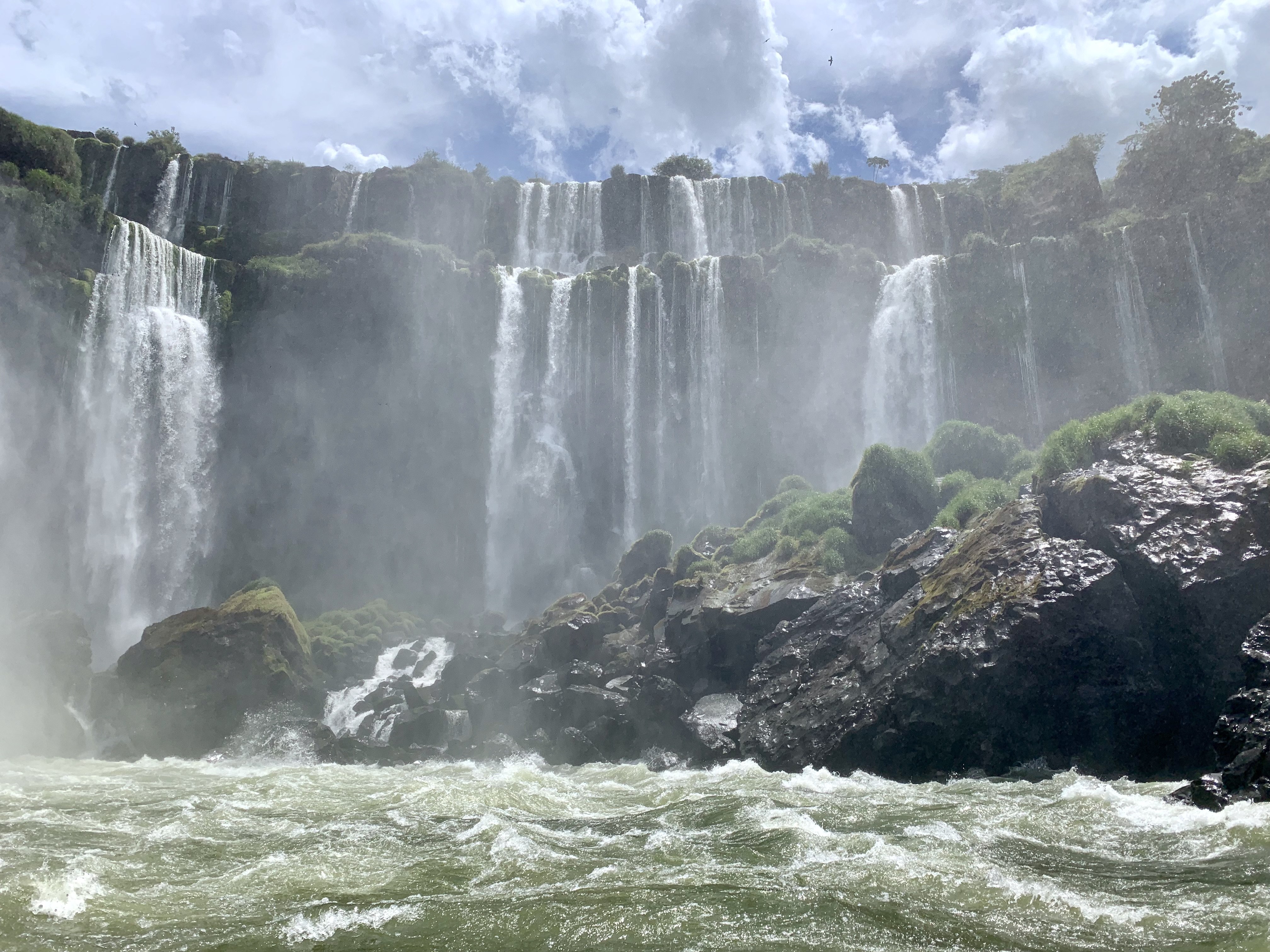
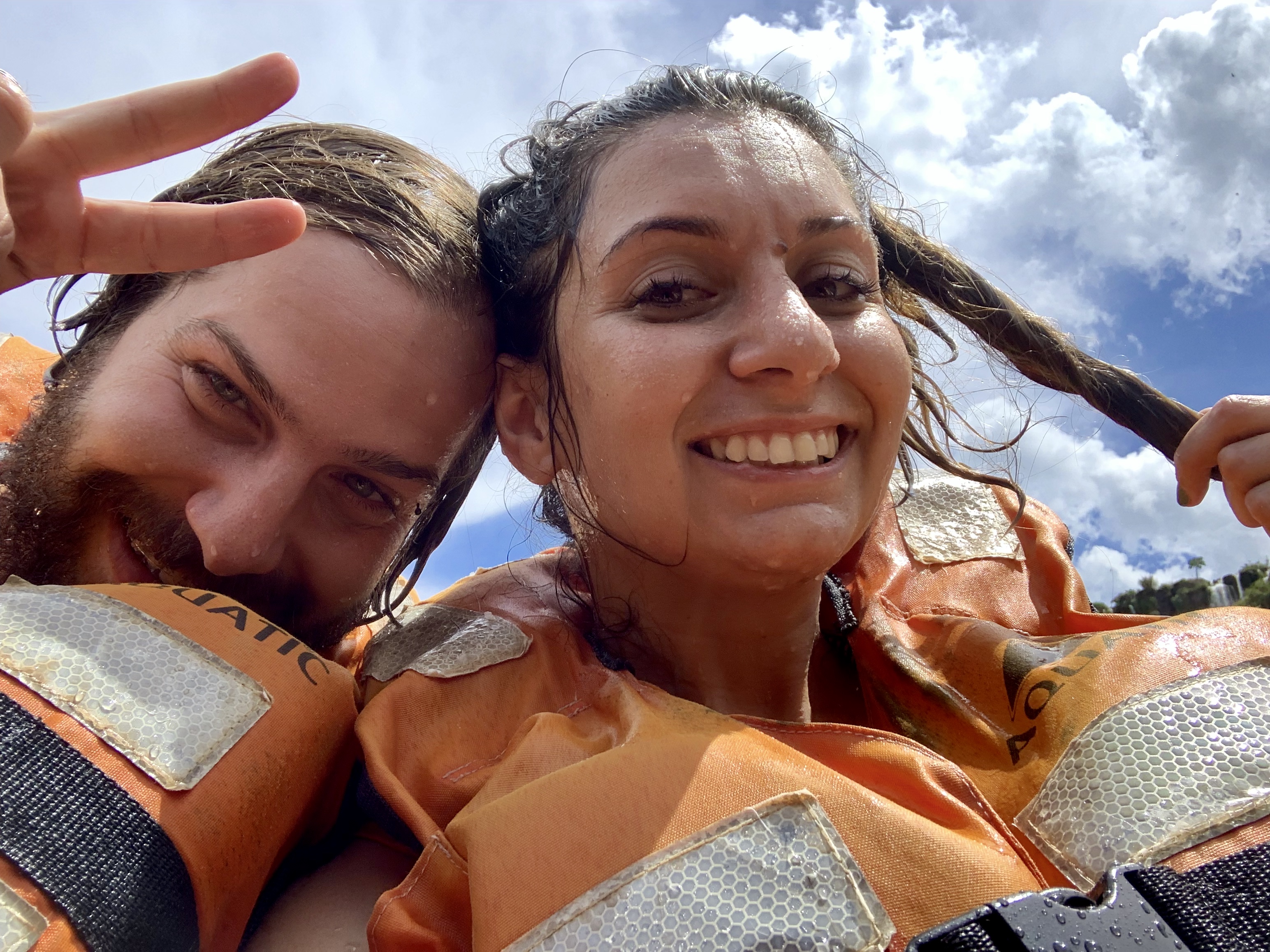
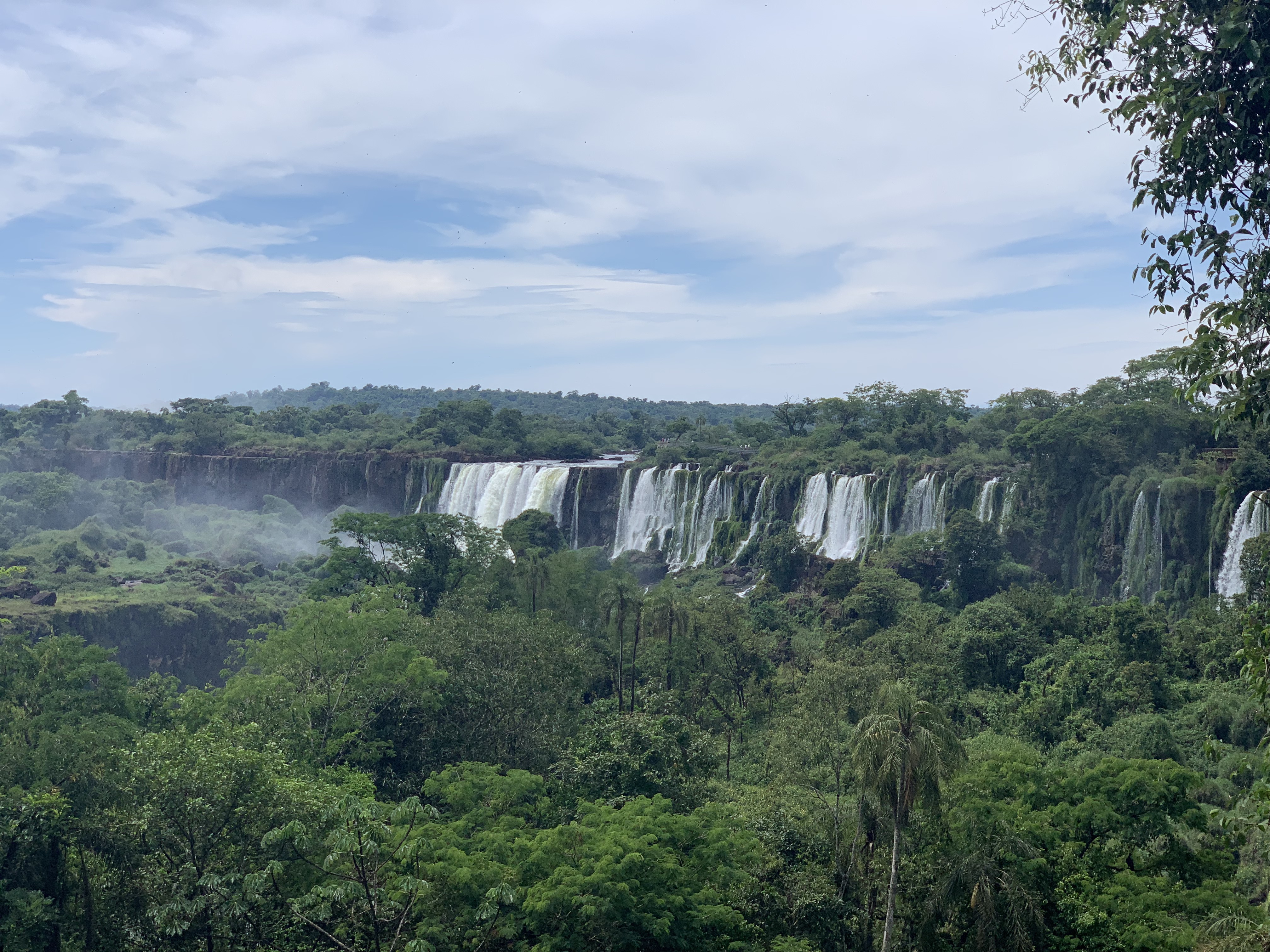
If you can add it to your budget, I really recommend doing the speed boat ride that takes you on an adventure through the river and under the falls, literally under the falls. You will get drenched. They do give you dry bags to keep your belongings in there without getting wet. It costs about $2000 ARS per person which is now about $53 USD.
The Brazilian Side of Iguazu Falls
In my honest, unbiased opinion, the Argentinian side is way better than the Brazilian side, but the Brazilian side has an uninterrupted, stunning panoramic view of the falls so it definitely wins in that aspect. The Brazilian side also offers more “experiences” than the Argentinian side so it wins in that aspect as well. Activities you can do on the Brazilian side of Iguazu, but can’t on the Argentinian side is kayaking, bike riding, helicopter tour. Well, the helicopter tour is outside of the park and the activities have an extra fee from the park entrance. We actually hadn’t planned on doing the helicopter tour, but when we got there, we said why not since neither have us had ever done one before. It gave us an even more incredible view of the falls.
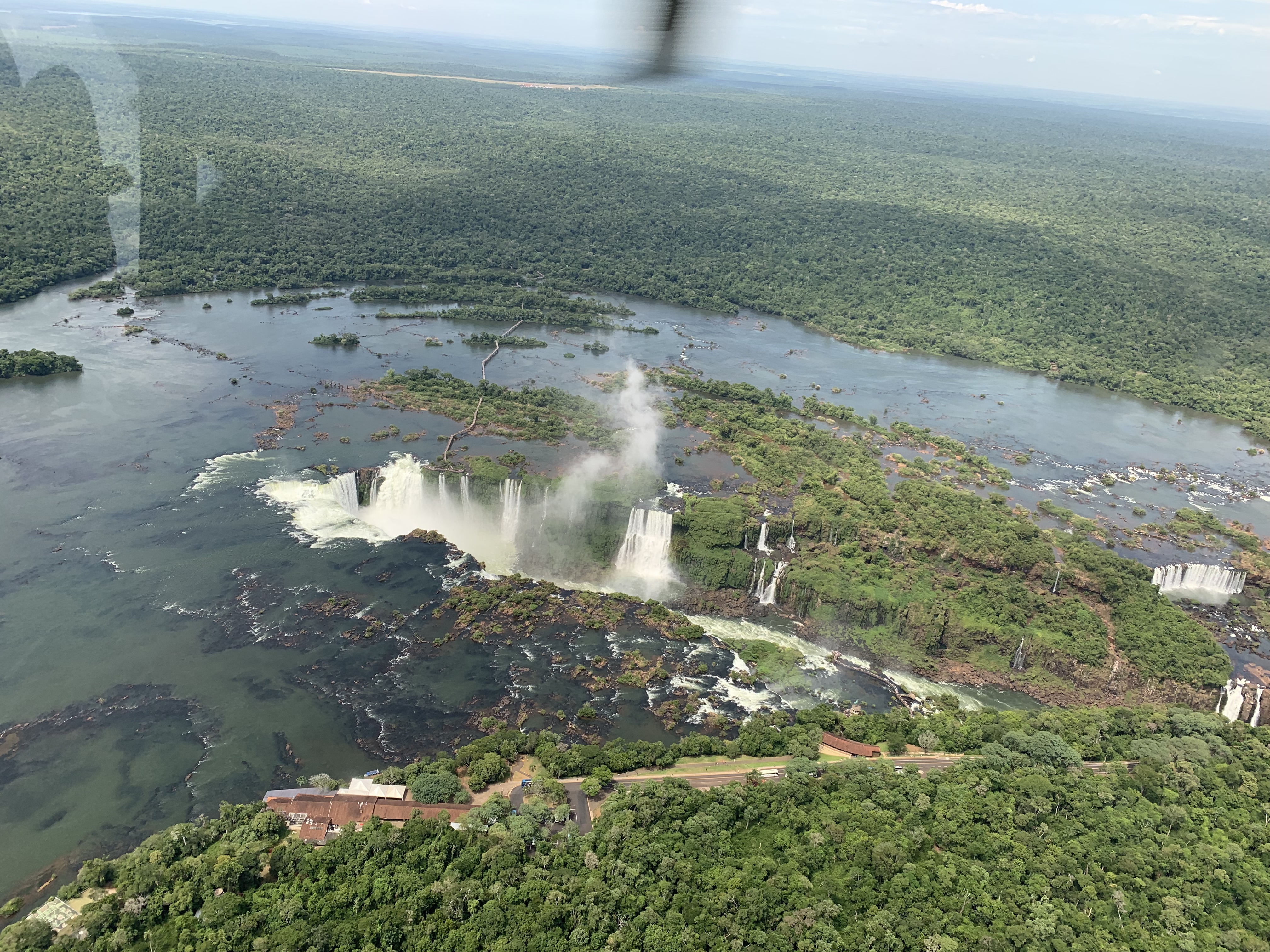
If you’re coming to the Brazilian side from Argentina, be sure to check the Visa requirements. USA citizens NEED a Visa and it is NOT offered on arrival. I had one from my trip to Brazil in 2014, which I applied for at the Brazilian Consulate in Buenos Aires. As of January 2018, you can apply online, but it still takes about 5 days to process. I am doing a major eye-roll here because when I got my Visa in 2014, I paid $160 USD, but to boost tourism, they brought down the price to $40 USD. You can apply for the visa here on the official government website: https://brazil.vfsevisa.com/brazil/online/home/index
I don’t recommend trying to squeeze both sides in one day, I don’t think it would be possible anyway. I recommend dedicating one full day to the Argentinian side but if you have an extra day or have a late flight the following day, then I recommend checking out the Brazilian side. Our flight the next day was scheduled for 5 pm, so instead of wasting time in town or hanging out by the pool, we wanted to go to the Brazilian side. We got there at 9 am and left at 2 pm with 2.5 hours to kill at the airport. Everything is relatively close to each other so as long as there isn’t a long line at the border, you should be fine time wise.
Things to Know About Iguazu Falls
- Food can be purchashed inside the park. There are several places to eat lunch, buy ice-cream (not cheap), buy water (small bottles). There are scattered water fountains available so you can refill your bottles, but they’re hard to find.
- You can arrange transportation to and from the falls through your hotel, through an excursion service or make an arrangement with a cab driver. We had an awesome driver who spoke English. He was our cab driver on our first night taking us back to our hotel from the city center and we made an arrangement on the drive home to take us to Iguazu Falls (Argentinian side) the next morning and we texted him when we were ready to leave the park. He also took us to the Brazilian side and and took us to the airport when we were done. You can make similar arrangements with any cab driver.
- You can do the Argentinian side in one day. You can’t do both sides in one day!
- There is free WIFI available in the restaurants and even at some of the water falls.
- There is a tram that takes you to some of the falls like The Devil’s Throat, but you can also take the trail. Always take the trail 😉
- You are going to get wet. Period.
- If you’re going to do the boat ride, take drinking water with you! There is none available there and you will get thirsty.
- You can use a credit/debit card to buy food, your ticket and souvenirs. Bring cash to buy art from local artisans.
- Foreigners entering the park need to present their passport.
- The park is open from 8:00 am to 6:00 pm, but the last ticket sale is at 4:30 pm.
- You can enter on the 2nd day for half the cost by validating your ticket before you leave on the first day at the ticketing center.
- Tickets for foreigners are $700 ARS or $180 ARS for foreign kids under 12.
Additional services to know about:
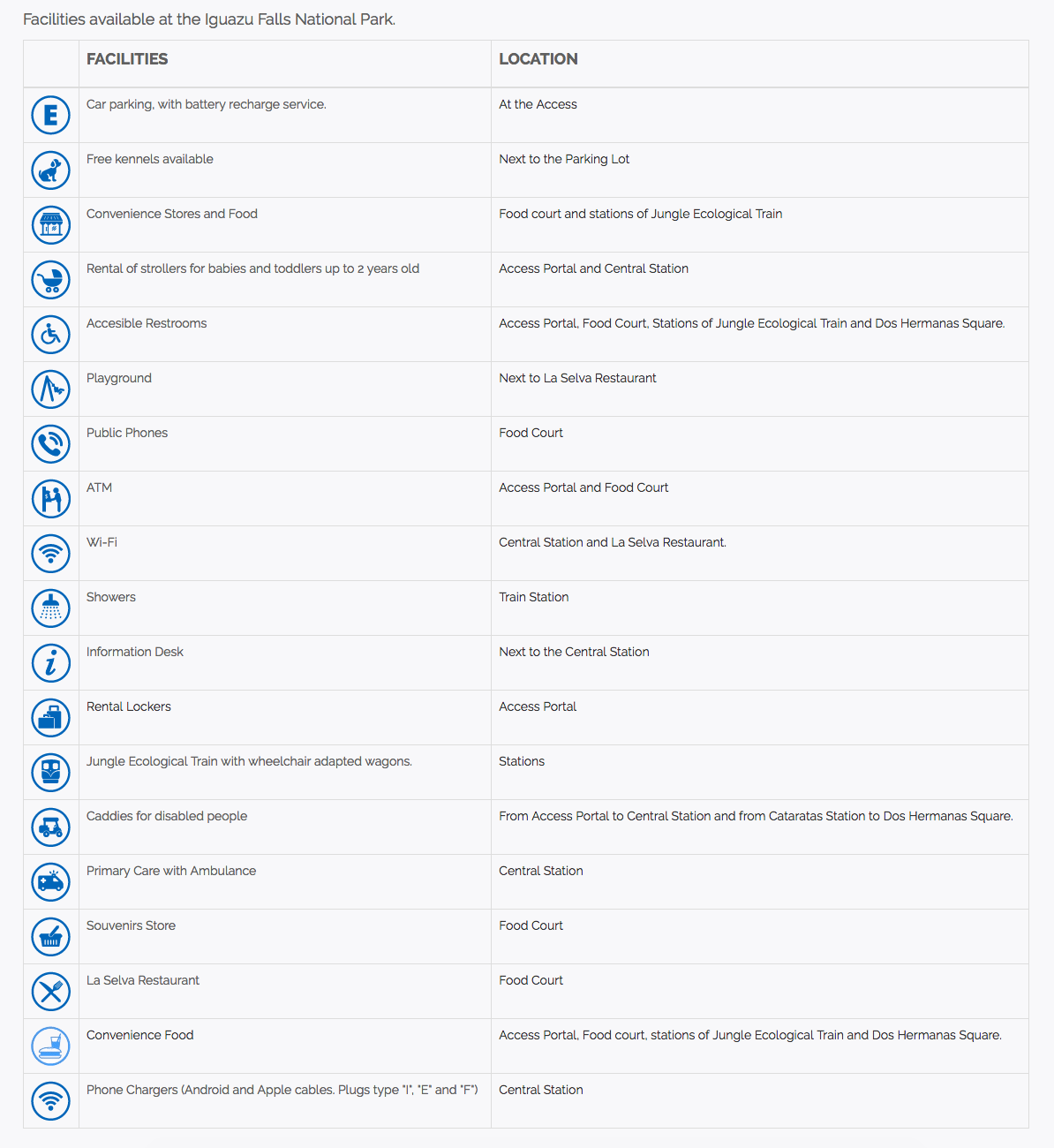
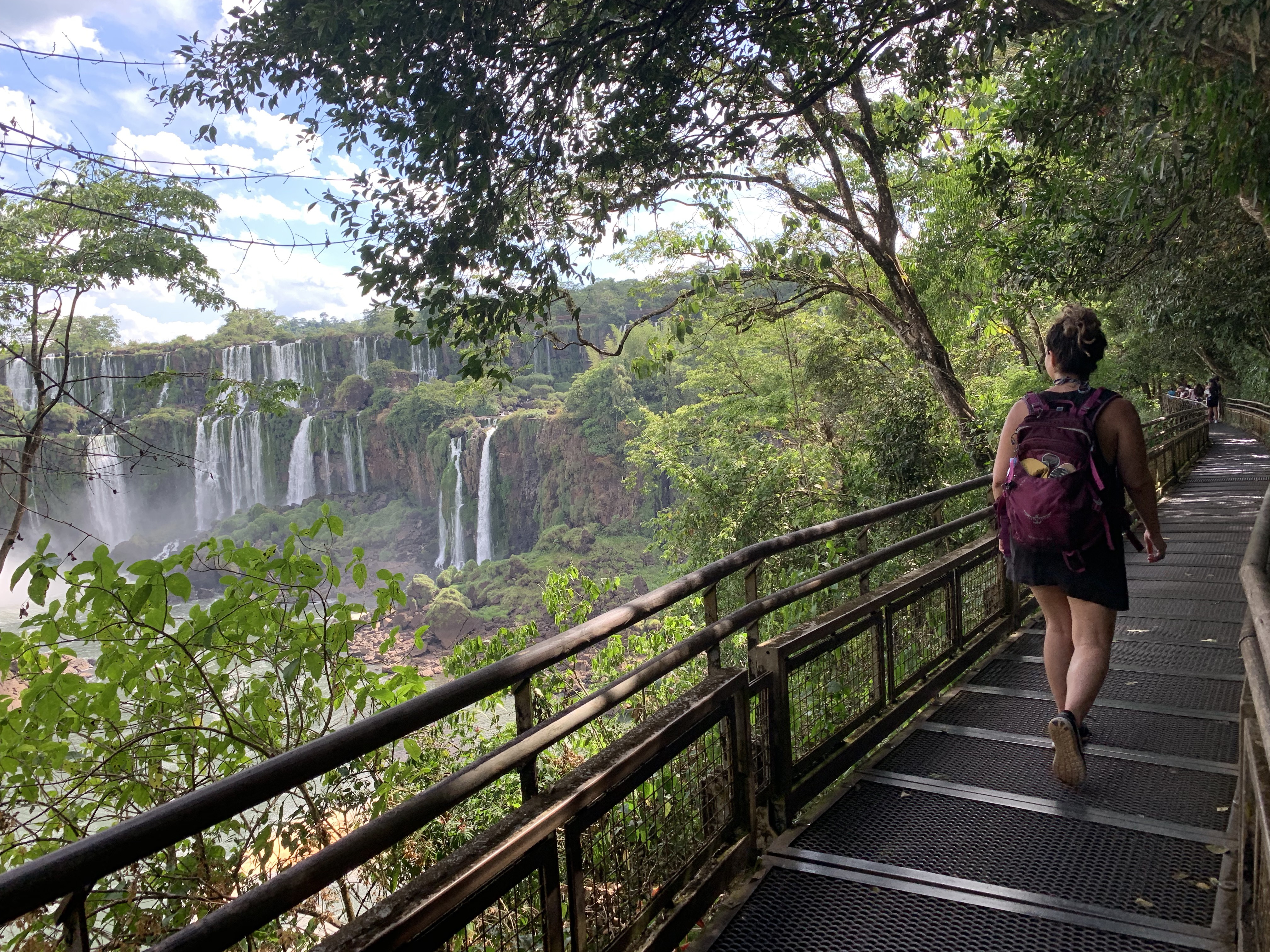
Have you been to Iguazu Falls on either side? Is it on your bucket list? Share in the comments below.
If you enjoyed this post, why don’t you follow Adrift Anywhere on Facebook or subscribe to get updates on budgeting tips, travel advice and tips!

